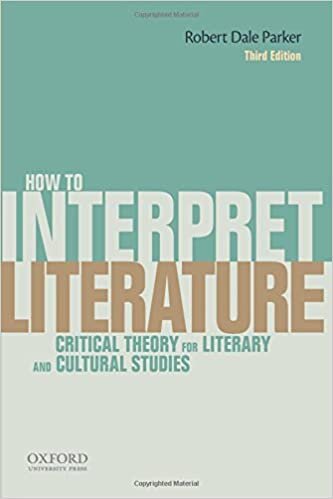Summary: How to Interpret Literature: Critical Theory for Literary and Cultural Studies, Chapter 2
Editor’s Note: For this assignment, I needed to read and summarize the published piece or content listed below, and then provide a response or assessment of the writing.
Summary
Parker explained how New Criticism is a break from its predecessor and moves the focus of literary criticism from history, moralizing, and reading aloud to criticism that is an intrinsic and methodical interpretation focused on paradox, ambiguity, tension, and irony. New critics believed the literary text and form alone could be used to create a comprehensive criticism, so they removed any personal, cultural, social, and historical influence in their criticism. They focused solely on a close reading of the text to determine the message the author is attempting to convey to readers. New critics also worked to find unity within all literature, whether that unity came in the form of clear and easy-to-recognize unity or unity through disunity. Brooks noted that new critics’ focus on unity limited the possibilities for literary criticism. Brooks also discussed two additional concepts that New Criticism introduced: intentional fallacy and affective fallacy. Intentional fallacy was defined as the mistake readers make in trying to determine the author’s intention with their work and claiming that their conclusion of the author’s intention was also the best interpretation of the author’s work. Brooks goes into great detail to explain how a reader can never truly know an author’s intention, so any determination of such an intention—and, therefore, any interpretation—is fallacious. Affective fallacy referred to the mistake readers make when they allow the emotions they feel after reading a piece of literature to be the basis for their interpretation of the author’s work. Brooks concluded his chapter by explaining that New Criticism became so popular because it provided a concrete method for students and critics to offer literary criticism and was considered to have leveled the playing field because everyone was using only their knowledge of the text to create criticism—no other outside information or knowledge was required.
Response
I love reading Parker. I can’t say enough how much I appreciate his down-to-earth approach to explaining literary criticism. He did a phenomenal job of making me realize why people grabbed on to New Criticism and held fast for so many years. It really did simplify and level out the critical parameters for both scholars and critics.
The idea of affective fallacy and intentional fallacy were key concepts to New Criticism that I was surprised were not introduced prior to New Criticism (affective fallacy more so than intentional fallacy). As with Parker, however, I have a few major reservations about using New Criticism only when completing a literary criticism, one in particular: With so many studies and examples of how historical, cultural, environmental, and personal events influence writers, I think New Criticism’s fatal flaw is that it refuses to incorporate these influences in the literary criticism. Even though Parker stated that new critics often considered the history and social influences of an author’s time, those considerations were not included in their analysis, which is a major mistake. I’d like to see a criticism by someone using strictly New Criticism theory, and a criticism of the same literary work using a combination of New Criticism and old criticism that incorporates historical, personal, cultural, and environmental influences. Perhaps the criticism would be largely the same, but perhaps there would be striking differences in how the text and form of the work were analyzed.
